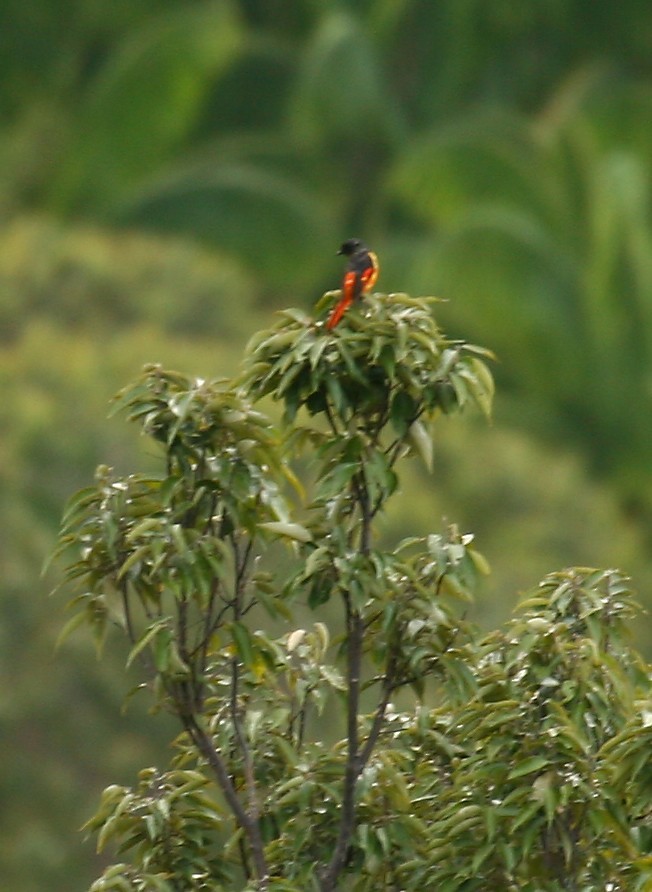Fiery Minivet
A species of Minivets Scientific name : Pericrocotus igneus Genus : Minivets
Fiery Minivet, A species of Minivets
Botanical name: Pericrocotus igneus
Genus: Minivets
Content
Description General Info
 Photo By Michael Woodruff
Photo By Michael Woodruff Description
The fiery minivet is 15–16.5 cm (5.9–6.5 in) long. It is sexually dimorphic. The male has a glossy black head and mantle and an orange-red back. The wings are mostly glossy black, with orange-red edges to the secondary coverts and an orange-red patch on the flight feathers. The gradated tail is black and orange-red. The chin and throat are glossy black, and the rest of the underparts is orange-red. The eyes are dark brown, and the beak and feet are black. The female has a grey head, with orange lores and eye-rims. The back is lead grey, and the rump is orange-red. The wings are darker grey, and the wing-patch is paler than the male's. The underparts are yellow. The juvenile bird has sooty brown upperparts and sooty black flight feathers. The underparts are off-white from the chin to upper belly, the rest being pale yellow. After a post-juvenile moult, it becomes similar to the adult female. 
Size
17 cm
Nest Placement
Tree
Feeding Habits
Fiery Minivet consumes small arthropods such as ants and beetles. They forage in the canopy, gleaning insects from foliage and visiting fig trees for prey drawn to fruit. Typically feeds in groups.
Habitat
The fiery Minivet predominantly resides in a range of forested environments, favoring mature and regenerated forest edges, as well as woodlands. It is also adapted to older plantations, specific scrublands often composed of casuarina trees, and dry beach forests. Occasionally, these birds can be observed in wooded gardens situated near forests. They are typically found in lowland regions.
Dite type
Insectivorous
General Info
Feeding Habits
Bird food type
Behavior
This minivet occurs in groups and also joins mixed-species foraging flocks. Its contact call is a swee-eet or twee-eet. It catches insects in the air and from leaves and branches. Breeding has been observed from May to July. The shallow cup nest is built on a fork of a tree from twigs and fibres and camouflaged with lichen and pieces of bark. The eggs are pale yellowish, with brown and grey marks. Moulting has been recorded from June to September. 
Distribution Area
This species is found in Tenasserim, the Thai-Malay Peninsula, Sumatra and its satellite islands, Borneo and Palawan. It is locally extinct in Singapore. It lives in the canopy of lowland broadleaf forest, forest edges, peat swamp forest, well-grown secondary forest, and coastal and mangrove forest. It is found up to 1,200 m (3,900 ft) in elevation, mainly below 600 m (2,000 ft). It sometimes visits wooded gardens near forests. 
Species Status
Deforestation due to logging and land conversion has likely caused the population to decline at a moderate speed. Forest fires are also a threat, such as in 1997 and 1998. The IUCN has assessed it as a near-threatened species. 

 Photo By Michael Woodruff
Photo By Michael Woodruff Scientific Classification
Phylum
Chordates Class
Birds Order
Perching birds Family
Cuckoo-shrikes Genus
Minivets Species
Fiery Minivet